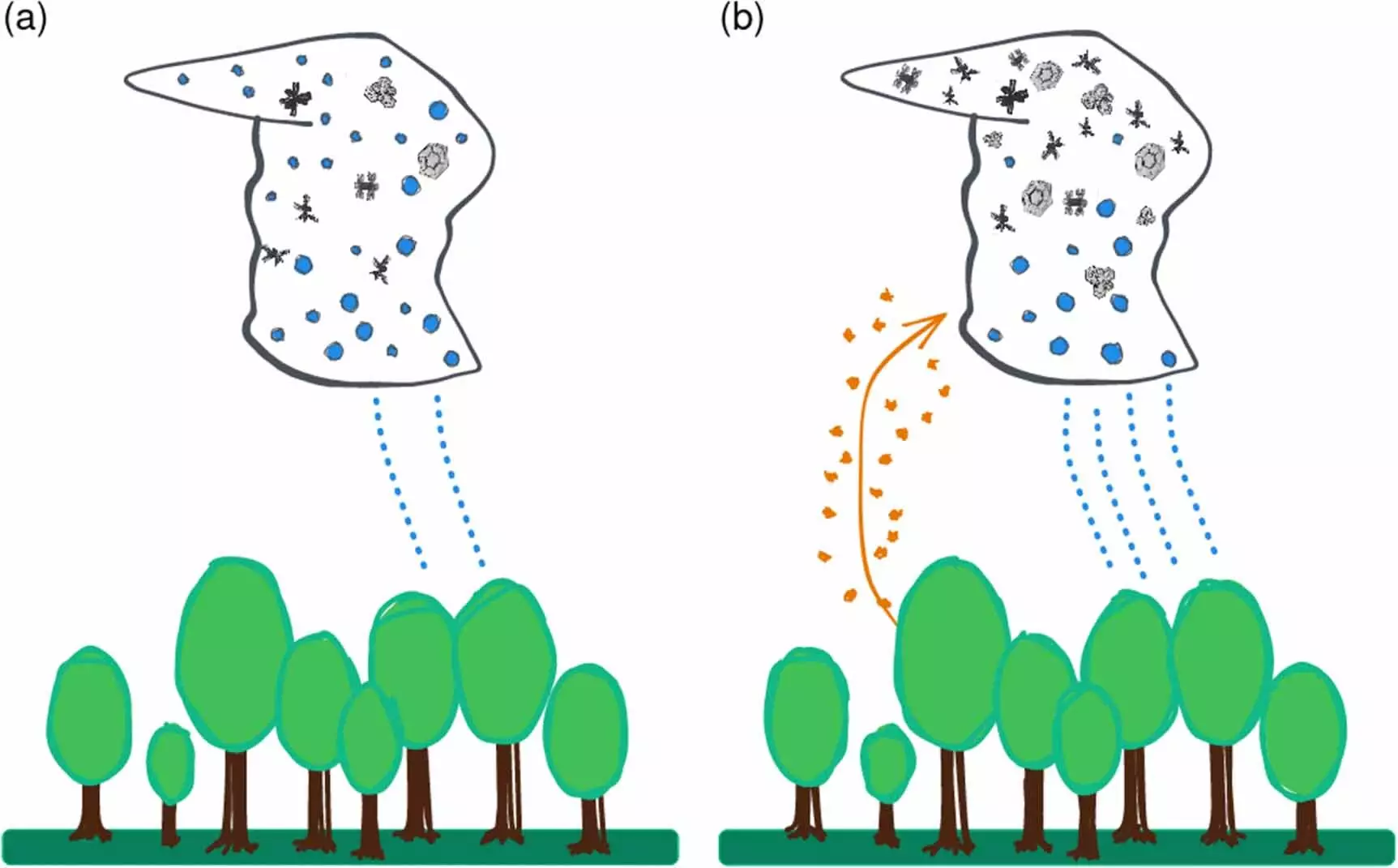In recent years, researchers have turned their attention to the intricate connections between biological phenomena and atmospheric processes. A groundbreaking study reveals that pollen not only impacts plant life but also plays a significant role in meteorological events. Specifically, increased concentrations of pollen during spring have been found to correlate with enhanced cloud ice formation and greater precipitation levels. This article delves into the implications of these findings, highlighting the intersection of climate change, biodiversity, and weather systems.
The study, spearheaded by meteorologist Dr. Jan Kretzschmar, uncovers how pollen acts effectively as an ice nuclei particle (INP). For water droplets in clouds to freeze, they traditionally require extremely low temperatures—generally around minus 38 degrees Celsius. However, pollen enables this process to occur at much higher temperatures, ranging from minus 15 to minus 25 degrees Celsius. Laboratory experiments have demonstrated that pollen grains can catalyze the freezing of water droplets, thereby influencing precipitation output in a potentially significant way.
Interestingly, while the global impact of pollen on ice formation is relatively modest when compared to other particles such as dust, its regional effects—especially during the spring—are noteworthy. This seasonal relevance is magnified by the sheer volume of pollen released, which ascends into the atmosphere and interacts with colder air masses.
As anthropogenic climate change alters environmental conditions, the dynamics surrounding pollen release are shifting. The study underlines a concerning trend: climate change is expected to extend the pollen season and increase pollen concentration in the atmosphere. Such changes do not just have repercussions for allergenic reactions among humans; they could also lead to more intense and frequent local precipitation events.
The implications of these findings extend beyond immediate weather patterns. Increased pollen concentrations could have cascading effects on ecosystems, agriculture, and even water resource management. Regions that traditionally experience lower precipitation may find themselves facing new challenges due to these changes, complicating climate adaptation strategies.
A critical yet often overlooked aspect of this study is the relationship between biodiversity and meteorological phenomena. The timing and quantity of pollen release are influenced by various plant species, each of which plays a unique role in cloud formation and atmospheric ice particle composition. As biodiversity dwindles, the synchrony of pollen release may be disrupted, leading to unpredictable shifts in local climate conditions.
According to co-author Professor Johannes Quaas, the intricate interactions that govern pollen’s impact on climate are still ripe for exploration. As climate models evolve, it becomes increasingly imperative to account for biological factors like pollen dynamics to create accurate predictions of weather patterns in a warming world.
The confluence of meteorology and biology sheds light on the complex web of interactions that define our climate system. The study, conducted by prominent institutions such as the Institute for Meteorology at Leipzig University and the Max Planck Institute for Biogeochemistry, underscores the importance of understanding pollen as more than just an allergenic nuisance; it is a pivotal player in weather formation and precipitation dynamics.
As researchers continue to unravel these connections, it is crucial to emphasize the need for further studies. A deeper understanding of pollen’s role in cloud formation and precipitation could hold the key to refining climate models and enhancing our ability to predict future climate patterns. By fostering interdisciplinary collaboration, we can gain insights that not only inform policy decisions but also enhance our overall comprehension of life’s intricate connections within Earth’s systems.


Leave a Reply